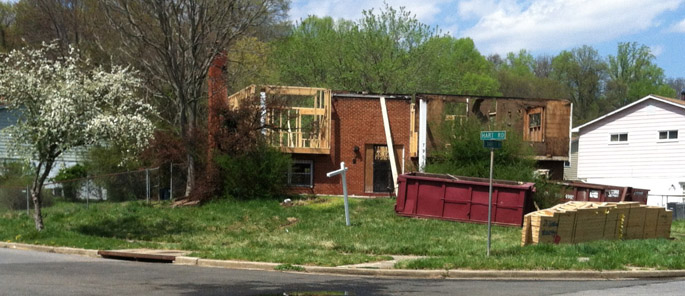
Prince George’s County—a majority-black, middle-income suburb of Washington, DC—was hit hard by the housing market crash and recession. My neighborhood and many others just like it saw high rates of foreclosures and distress sales, with “for sale” signs popping up on every block. Neighbors have been taking turns mowing the lawns of vacant homes. And property values sank precipitously; Zillow’s home value index for the county dropped from $299,000 in June 2008 to $203,000 in March 2012.
Recent months have brought welcome signs of recovery. In March of this year, Zillow’s home value index stood at $213,000. A couple of weeks ago, the Washington Post attributed this trend to investor buyers, who account for a third of all home sales in the county. Construction crews are fixing up long-vacant homes. And these days, “for rent” signs far outnumber “for sale” signs as I drive around my neighborhood.
Higher values, property improvements, and occupied homes are all good for the neighborhood and for homeowners, half of whom reportedly owe more than their properties are worth. But conventional wisdom has long seen absentee owners and rising rentals as signals of distress and decline—especially in neighborhoods with mostly single-family homes. If investors make only cosmetic property improvements before trying to flip their recent purchases to new buyers or if those holding homes as landlords don’t invest enough in maintenance, the recent recovery could be short-lived.
What do we know about investor buyers and their likely behavior? Alan Mallach’s research teaches us that their motivations and behavior differ from homebuyers, with consequences for neighborhood vitality in the long term. Mallach describes five distinct types of investor buyers: flippers, rehabbers, milkers, short-term holders, and medium-to-long-term holders. The mix of these types varies from one market to another and changes as market conditions change.
In a community like Prince George’s, with weak price appreciation and little evidence of surging demand, the medium-to-long-term holder is likely a dominant investor type. That’s probably good news, as long as these new owners act as responsible landlords, maintaining the properties they’re renting out and monitoring the behavior of their tenants. To make sure that happens, local government must establish and enforce clear standards that encourage and reward responsible landlords, while promptly identifying and penalizing bad behavior. That means:
- Building an information system to identify and keep track of landlords and their properties.
- Establishing and enforcing clear standards for property condition.
- Imposing penalties when landlords fail to comply.
Mallach provides details on how other jurisdictions are tackling these tasks. Now’s the time for homeowners and community-based nonprofits in to make sure Prince George’s County is taking the right steps for the long-term health of our neighborhoods.
Photo by Margery Turner, Urban Institute
Let’s build a future where everyone, everywhere has the opportunity and power to thrive
Urban is more determined than ever to partner with changemakers to unlock opportunities that give people across the country a fair shot at reaching their fullest potential. Invest in Urban to power this type of work.